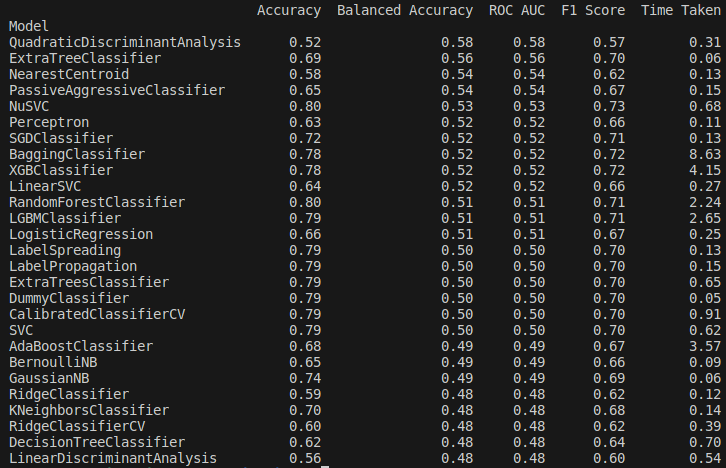LOS/NLOS Classification
Overview
The MILUV devkit provides an example of LOS/NLOS for users to run and modify. To run this example, run
python examples/ex_los_nlos_classification.py
in the repository’s root directory.
The output from this example is show below. 
More details
This example demonstrates how to use CIR data and how to set up MILUV data for machine learning purposes as shown below,
import numpy as np
from sklearn.model_selection import train_test_split
from lazypredict.Supervised import LazyClassifier
from miluv.data import DataLoader
# List of anchor IDs that are NLOS
tag_ids_nlos = [
1, # styrofoam
3, # plastic
4, # wood
]
mv = DataLoader(
"cirObstacles_3_random_0",
barometer=False,
)
data = mv.data
X = []
y = []
for robot_id in data.keys():
for anchor_id, cir_data in zip(
data[robot_id]["uwb_cir"]["to_id"],
data[robot_id]["uwb_cir"]["cir"],
):
cir_data = cir_data.replace("[", "").replace("]", "").split(", ")
cir_data = [int(x) for x in cir_data]
X.append(cir_data)
if anchor_id in tag_ids_nlos:
y.append(1)
else:
y.append(0)
X = np.array(X)
y = np.array(y)
X_train, X_test, y_train, y_test = train_test_split(
X,
y,
test_size=0.2,
random_state=0,
)
# Continued below...
As an example, we use the lazypredict library to run a suite of classification techniques for the LOS/NLOS task. This code can easily modified to substitute what is below for another classification algorithm.
#... Continued from above
# YOUR ML CLASSIFIER GOES HERE
clf = LazyClassifier(verbose=0, ignore_warnings=True, custom_metric=None)
models, predictions = clf.fit(X_train, X_test, y_train, y_test)
print(models)